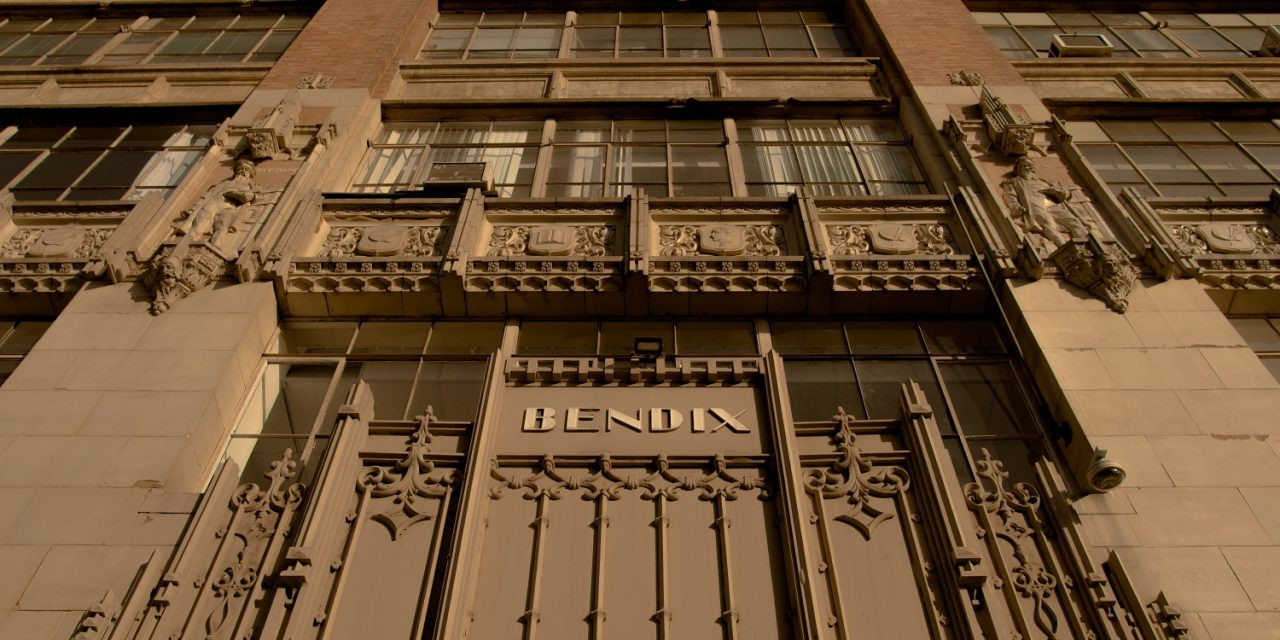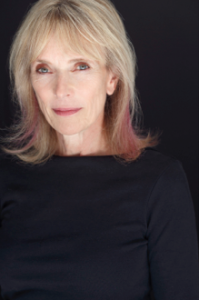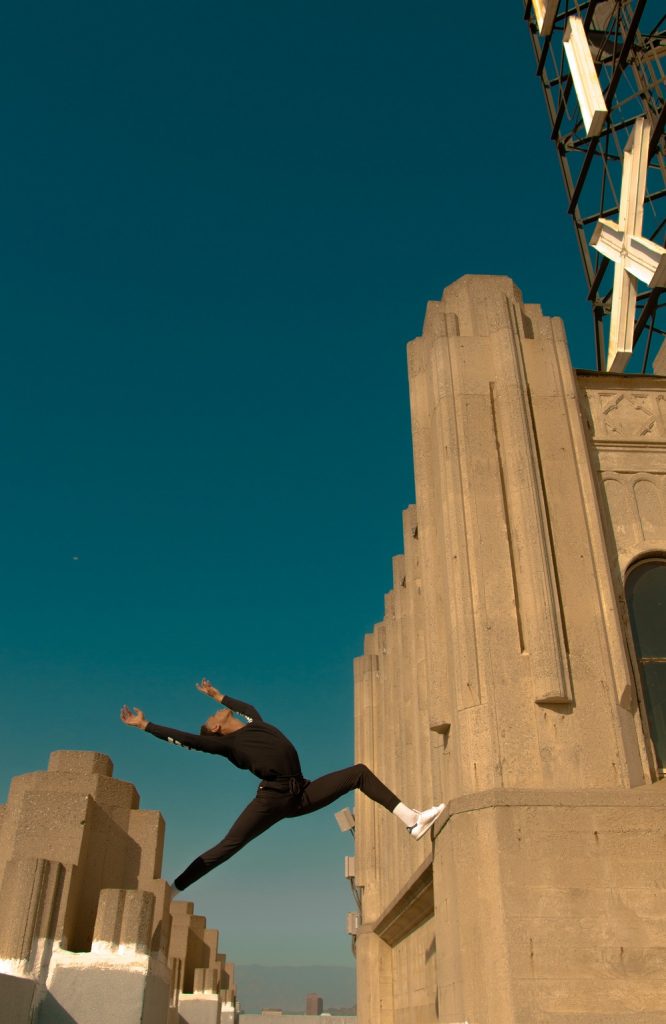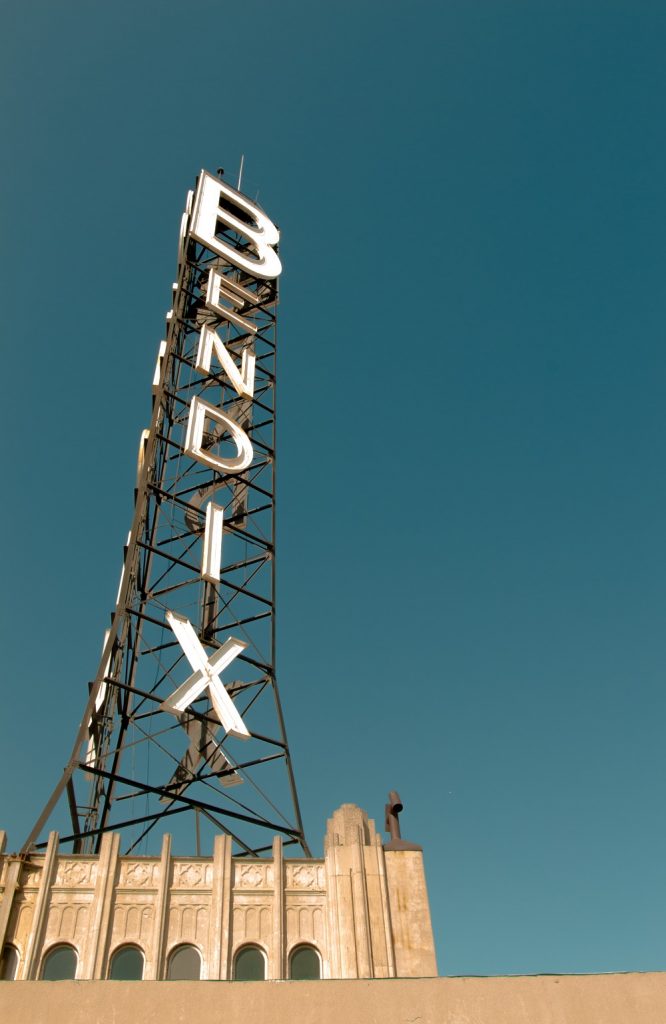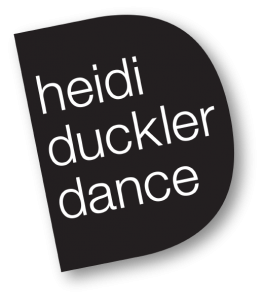On May 3, 2021 we were treated to REMNANTS, a unique culmination of seven workshops at the Downtown Women’s Center and supported by the California Arts Council. It was curated by Heidi Duckler, Artistic Director and Founder of Heidi Duckler Dance (HDD), an intensely creative pioneer of interdisciplinary performance; and Snezana Petrovic, artist, costume designer and installation/video artist, whose joyful, playful collaboration with Duckler has lasted many years of creative productivity.
Duckler introduced the evening of REMNANTS Salon having generated and participated in the workshop herself since March. She admits, “I’ve learned so much about deepening the artistic exploration as we’re all preparing to enter back into the world. A new perspective was gained and what was left to reflect were the remnants…the language, written and visual, and the residue was revealed. Like the Bendix Building – it showed its former greatness by what survived. What is left of a community after a disaster exposed the questions of the past, present and future.
The workshops included teaching artists distinguished in their disciplines, and creative artists who produced stunning and revealing explorations of art forms both foreign and familiar to themselves. The processes challenged each of the participant to explore both “the inner and outer self” with words, stories, poetry, picture and movement which asked for commitment and investigation. The two-month experience embraced in-depth work and insights from the challenges they overcame.
The Teaching Artists introduced different approaches of seeing and being in the world:
Poet, Ajanae Dawkins explored identity through the written word, and story. While Anthea Young used movement to mine the inner self brought out into the open.
Dawkins facilitated two workshops, writing and performance. This was her first time working with dancers. This helped her think about what embodiment actually meant. Quite different for dancers, was the challenge of embodying storytelling through words and poetry. Exploring what it’s like telling your story in 15 words and then finding a way to share that expression when you’ve relied before on your body to tell the story. It was transformative for her, a poet, performer and playwright who had been teaching for 10 years.
Petrovic, a teaching artist, a visual artist and costume designer, loved that Heidi approached her. As she spoke we saw video of her sketching and brief looks at painting which seemed to enhance her presentation. She mentioned the “Outer You and Inner You. We’re looking to both.” The workshop was meant to give performers strategies and skills to convey those expressions of you-ness, your self-portrait, a kind of iceberg of who we are. The performers were encouraged to express themselves regardless of skill level. The journey was most important and what was left was the synergy and connection. It leaves you free of judgment. It pulls back the curtain and creates change in this practice.
Lily Ontiveros, performing artist’s astute comment “It struck me where my mind [goes] when I’m not looking. I learned a lot about who I am as a dancer, who I am visually and how I create.”
The Moderator, Himerria Wortham – got to experience Ajanae’s wonderful and revealing class. As a dancer, Himerria recalled that she relied on her body and non-verbal communication for years. “I was scared of reciting poetry… I forgot lines.” But because it was safe in the workshop, the exercises became so revealing and helpful. The approach to telling her own stories allowed her to feel it all in her own body. “It was an ice breaker” And feeling it in her body, she could then flip to the words. “I started where I felt it…and that took me out of fear. So beautiful! “
Anthea Young –Teaching Artist of dance and movement, “When I was asked to lead the movement portion IDENTITY AND SOUL, I asked what is soul? What is identity?” We identify with things, but in a pandemic who are we without those things? In the writing we first did a movement exercises to explore “I AM…” phrases. Ex: I am powerful. I am a leader, etc. Then we explored those phrases to create our final pieces.
Kaitwan Jackson participated with Anthea and focused on identity I AM Black, creative, temperamental…etc. “I had such personal revelations on what my identity was, I am Kaitwan… I am my name. But I did not feel connected to that name. It was because I didn’t see my name anywhere.” He soon realized that there was meaning behind the name. “My mother brought the remnants of experiences she had in her life. “
I had the same experience, Anthea reveals. To never see your name at Disneyland. It’s the name…the first thing we’re identified with. We don’t get to choose our name and then we eventually embody our name. Then you own it. That was part of the intention I created. Everyone realizes they are the source and you can own that. You get to be proud of it.
The salon then moved on to two videoed pieces that came out of the Workshop.
GOING BY, Kaitwan’s piece was a study exploring the sound and feel of his name. It begins with a Voice Over spelling his name as the camera moves to a large tree swaying in the wind. We then find Kaitwan in a back yard, moving purposefully and then with abandon, his face reveals a joy in the movement. He moves against the concrete and stucco of the backyard. It then cross fades to the freedom of the ocean, winding down to Voice Overs saying his name and nicknames repeated over the ocean pounding upon the surf.
TO THE ROOT: Lily Ontiveras and Raquel Cabrera collaborated as Creative Production and Performance designers. Lily introduced a short overview of their process, “What we learned and our process of TO THE ROOT (Hasta La Raiz) was a journey of our Mexican Identity. In the workshop we spoke of untranslatable words. We talked about experiences that were untranslatable because of culture or the way you grew up.” Lily shared a moving poem that pulled the culture and creation together… “I CARRY YOU WITHIN TO THE ROOT AND NO MATTER HOW MUCH I GROW, YOU WILL STILL BE HERE.
Raquel, the director of TO THE ROOT began with pictures of Los Angeles. She wanted to introduce the concept of being Mexican American in the hustle and bustle of a busy city. The piece grew from two running figures of Raquel and Lilly in mundane street clothes finding themselves lost in a maze of steel girders of an unfinished bridge creating the raw feeling of impermanence, building and rebuilding with Raquel flinging lifeless earth and sand in the air in a desperate act of defiance. It then transitions to the discovery of the colorful palate and finding each other at a mural of Mexican icons showing a visual history of the culture in symbol and painting. The lyrical movements of both the performers and the camera in a kind of pas de deux with the cinematography by Nilangana Banerjee and performers in ribboned Folkloric skirts styled by Anais Catalina, culminated in a melding together, to the strains of Hasta la Raiz by Natalia Lafourcade.
Camille Elston’s background in design and heritage conservation was an observer and spoke about story and what our imagination does to fill in the scene.
There was then a Q & A moderated by Himerria Wortham – questions came up about struggle of an artist and the purpose in the quietness. Snezana admitted that she always has fears but must have the courage to try other disciplines. The goal is not to make you fully skilled but it is about expressing yourself through action to define self. Ajanae, admitted it took going to Europe and learning several other languages to have the right language to express her feelings. Something English did not allow her to do.
Raquel and Lilly untranslatable experiences also could not find the words their culture provided and its sense of depth. Also, words can be limiting when our body can do so many things. Lily added, “It’s only because you or your parents lived in another country and you can only express those feeling with them…and that helps pass those feelings down through generations. Anthea admits that’s how I connected with it and it all came together for me. ”It gave me a space and the language to express myself. Dance made me feel something I loved. Something that I didn’t have words for. It gave me discipline, a sense of commitment – and socially there’s nothing like the dance family. You might be exhausted but you were still there.
Snezana, wrapped up the evening with her moment of reflection on the months of discovery. “It brought hope and life to the question…What do we do now? As a result of the artistic experience, it helps us live with a life full of hope and joy.” And after all, is that not what we’re after these days.
Written by Joanne DiVito for LA Dance Chronicle.

